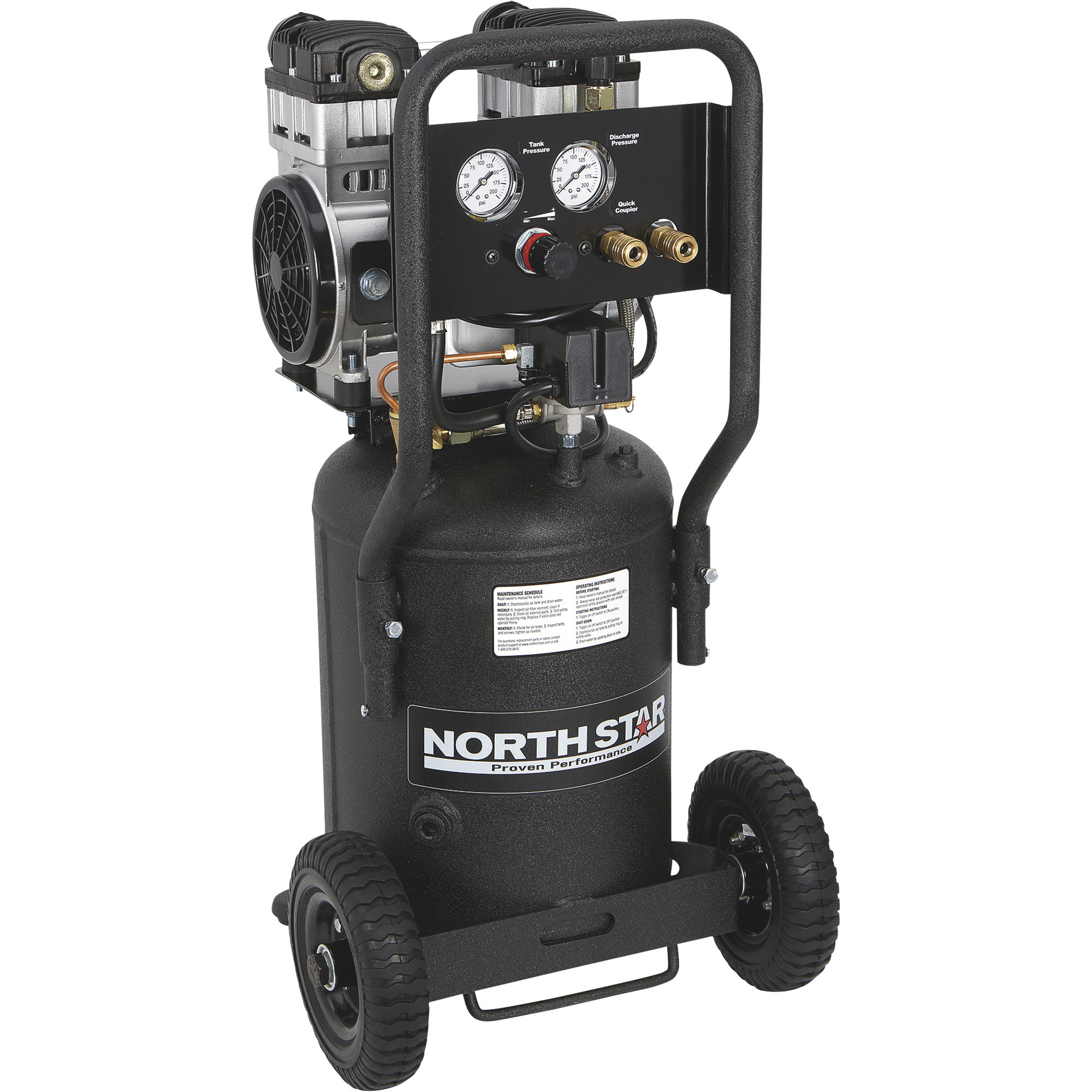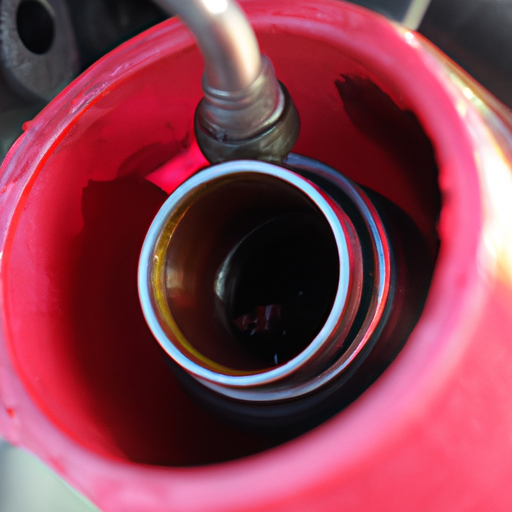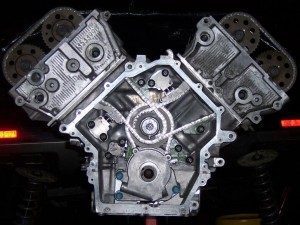To fix a northstar engine oil leak, start by locating the source of the leak, such as the oil cooler lines or valve cover gaskets, and replace them if necessary. Then, clean the area around the leak to ensure a proper seal, and use a high-quality sealant or gasket to prevent future leaks.

Credit: www.northerntool.com
Understand The Northstar Engine Oil Leak Problem
The northstar engine, found in some cadillac models, is known for its luxurious performance. However, one common issue that can plague this engine is oil leaks. If left untreated, these leaks can have a detrimental impact on the engine’s performance and longevity.
In this section, we will delve into the common causes of oil leaks in northstar engines, discuss the importance of diagnosing the specific issue correctly, and uncover the potential consequences of oil leaks on the overall performance of the engine.
Common Causes Of Oil Leaks In Northstar Engines
Oil leaks can occur for various reasons in northstar engines. It is essential to identify the root cause accurately to implement the appropriate fix. Here are some of the common causes of oil leaks in northstar engines:
- Faulty gaskets: Aging gaskets can develop cracks or become worn out, leading to oil leaks. This can include the head gaskets, valve cover gaskets, or oil pan gaskets.
- Degraded seals: Over time, the seals in the engine can deteriorate, causing oil to seep out. This includes the crankshaft seals, camshaft seals, and the rear main seal.
- Loose or damaged oil filter: A loose or damaged oil filter can result in oil leakage around the filter housing.
- Cracked oil cooler: The oil cooler, responsible for keeping the oil at an optimal temperature, can develop cracks, leading to oil leaks.
- Engine overpressure: Excessive pressure within the engine may cause oil leaks, usually due to issues with the pcv system or blocked oil passages.
Importance Of Diagnosing The Specific Issue Correctly
Diagnosing the specific issue causing the oil leak is crucial for two main reasons:
- Cost-effective repairs: Identifying the exact source of the oil leak allows for targeted repairs, avoiding unnecessary expenses on fixing unrelated components.
- Prevent further damage: Addressing the root cause promptly prevents further damage to the engine. Ignoring oil leaks can lead to reduced engine performance, decreased fuel efficiency, and potentially catastrophic engine failure.
Impact Of Oil Leaks On Engine Performance And Longevity
Oil leaks can have a significant impact on the overall performance and longevity of the northstar engine. Here are some key consequences of oil leaks:
- Insufficient lubrication: Oil leaks can result in low oil levels, leading to inadequate lubrication of engine components. This friction can cause premature wear and tear, reducing the engine’s lifespan.
- Increased risk of overheating: Oil is essential for dissipating heat in the engine. If oil leaks, the cooling capacity decreases, potentially resulting in engine overheating and subsequent damage.
- Poor fuel efficiency: Leaking oil can contaminate components such as spark plugs, leading to inefficient combustion and reduced fuel efficiency.
- Safety hazards: Oil leaks can create slippery surfaces, increasing the risk of accidents, especially if the oil leaks onto the road while driving.
It is important to address oil leaks promptly to ensure optimal engine performance and longevity. Let’s explore the various methods to fix northstar engine oil leaks in the upcoming sections.
Step-By-Step Guide To Fixing Northstar Engine Oil Leak
If you own a northstar engine and have been experiencing oil leaks, don’t worry – you’re not alone. Oil leaks are a common issue with these engines, but the good news is that they can be fixed. In this step-by-step guide, we will walk you through the process of fixing a northstar engine oil leak, from checking for oil puddles under the car to replacing various components that may be causing the leak.
Check For Oil Puddles Under The Car
The first step in fixing a northstar engine oil leak is to check for oil puddles under the car. This is a simple yet crucial step in identifying if there is indeed an oil leak. Look for any signs of oil on the ground beneath your parked car, particularly near the engine area.
If you notice oil puddles, it’s a clear indication that there is an oil leak that needs attention.
Examine Engine Components For Any Visible Oil Stains
Once you’ve confirmed the presence of oil puddles, the next step is to examine the engine components for any visible oil stains. Some common areas where leaks can occur include the valve cover gaskets, oil cooler lines, and the oil pan gasket.
Look for any signs of oil stains on these components, as they can help pinpoint the source of the leak.
Using Uv Dye And A Black Light For Detection
To aid in leak detection, you can use uv dye and a black light. Uv dye is added to the engine oil, which makes it easier to spot leaks under the black light. After adding the dye, let the engine run for a short period before inspecting the engine with the black light.
This method can quickly identify the exact location of the oil leak, helping you focus your repair efforts.
Taking The Car For A Professional Inspection If Necessary
If you are unable to locate the source of the oil leak or if the repair seems beyond your skill level, it’s advisable to take the car for a professional inspection. An experienced mechanic will have the expertise and tools necessary to diagnose the issue accurately.
While it may involve additional costs, getting professional help ensures the leak is addressed effectively.
Explanation Of Valve Cover Gaskets And Their Role
Valve cover gaskets play a vital role in preventing oil leaks in the northstar engine. These gaskets seal the gap between the valve cover and the engine block, ensuring oil does not escape. Over time, these gaskets can deteriorate and develop cracks, leading to oil leaks.
Inspecting the valve cover gaskets is an essential step in fixing the oil leak.

Step-By-Step Instructions For Replacing The Gaskets
To replace the valve cover gaskets, follow these steps:
- Begin by disconnecting the negative battery cable.
- Remove any components obstructing access to the valve covers.
- Carefully remove the valve cover bolts and lift the covers.
- Clean the mating surfaces of the engine block and the valve covers.
- Install the new gaskets on the valve covers.
- Reinstall the valve covers, ensuring they are properly seated.
- Fasten the valve cover bolts to the specified torque.
- Reconnect the negative battery cable.
- Start the engine and check for any signs of leaks.
Understanding The Purpose Of Oil Cooler Lines
Oil cooler lines carry the engine oil to and from the oil cooler, regulating its temperature. These lines can develop leaks due to wear and tear or prolonged exposure to heat. It’s essential to understand their role as they may be another potential source of the oil leak.
Detailed Process Of Repairing Or Replacing The Lines
To repair or replace oil cooler lines, follow these steps:
- Locate the oil cooler lines, typically near the radiator.
- Inspect the lines for leaks or damage.
- If there are leaks, you may try tightening the connections.
- If the lines are damaged, replacement may be necessary.
- Purchase new oil cooler lines that match the specifications of your vehicle.
- Carefully remove the old lines, taking note of their routing.
- Install the new lines, ensuring they are secured and routed correctly.
- Tighten all connections to prevent leaks.
- Start the engine and check for any signs of leaks.
Importance Of The Oil Pan Gasket In Preventing Leaks
The oil pan gasket is another crucial component that prevents oil leaks. It forms a seal between the oil pan and the engine block, keeping the oil contained within the engine. Over time, the gasket can wear out or develop cracks, leading to oil leaks.
Understanding its importance allows you to address any issues promptly.
Instructions For Removing And Replacing The Gasket
To remove and replace the oil pan gasket, follow these steps:
- Ensure the engine is cool and raise the vehicle safely.
- Drain the engine oil into a suitable container.
- Remove the oil pan bolts, gradually working your way around.
- Carefully lift the oil pan to access the gasket.
- Remove the old gasket and clean the mating surfaces.
- Apply a thin layer of gasket sealer to the new gasket.
- Place the new gasket onto the engine block.
- Lower the oil pan and secure it with the bolts.
- Refill the engine with the appropriate amount of oil.
- Start the engine and check for any signs of leaks.
Highlighting Additional Possible Causes Of Oil Leaks
While valve cover gaskets, oil cooler lines, and the oil pan gasket are common causes of oil leaks in northstar engines, there may be other potential culprits to consider. These include:
- Faulty oil filter housing gasket
- Cracked engine block
- Worn or damaged oil seals
- Defective oil pressure sensor
Quick Troubleshooting Tips And Solutions For Each Cause
To troubleshoot and address these additional causes of oil leaks, consider the following tips and solutions:
- Check and replace the oil filter housing gasket if necessary.
- Consult with a professional if you suspect a cracked engine block.
- Inspect and replace worn or damaged oil seals.
- Test and replace a defective oil pressure sensor.
By following this step-by-step guide and considering the various components that may be causing the oil leak in your northstar engine, you’ll be able to effectively fix the issue and prevent further leaks. Remember, regular maintenance and inspections are key to keeping your engine running smoothly and leak-free.
Preventive Measures To Avoid Future Oil Leaks
Oil leaks in northstar engines can be a frustrating and costly issue to deal with. Luckily, there are preventive measures you can take to minimize the risk of oil leaks occurring in the future. By following these steps, you can ensure the longevity of your engine and avoid the hassle of dealing with oil leaks.
Importance Of Regular Engine Maintenance And Inspection
Regular engine maintenance and inspection play a crucial role in preventing oil leaks. Here are some key points to keep in mind:
- Schedule regular maintenance: Make sure to adhere to your vehicle’s recommended maintenance schedule. Regular check-ups will allow you to catch any issues before they worsen, including potential oil leaks.
- Inspect hoses and gaskets: Regularly inspect the hoses and gaskets in your engine. Look for signs of wear, cracks, or leaks, and replace them promptly if necessary. Damaged gaskets and hoses are common culprits of oil leaks.
- Check the oil pressure: Low oil pressure can lead to leaks. Check the oil pressure regularly to ensure it remains within the recommended range. If you notice any abnormalities, have it checked by a professional technician.
Tips For Preventing Oil Leaks In Northstar Engines
Taking some extra precautions can go a long way in preventing oil leaks in your northstar engine. Consider the following tips:
- Avoid overfilling the oil: Overfilling the oil can put excessive pressure on the engine and lead to leaks. Always follow the manufacturer’s guidelines for the appropriate oil level.
- Replace worn-out seals and gaskets: Over time, seals and gaskets can become worn or damaged, resulting in oil leaks. Regularly inspect and replace these components if needed.
- Pay attention to temperature fluctuations: Extreme temperature changes can cause the engine components to expand and contract, leading to leaks. Avoid sudden temperature changes when possible.
- Use high-quality engine oil and additives: Opt for high-quality engine oil that meets the manufacturer’s specifications. Using the right oil and additives can help maintain optimal engine performance and reduce the risk of leaks.
Recommendations For Using High-Quality Engine Oil And Additives
Using high-quality engine oil and additives is essential for keeping your northstar engine in top shape. Here are some recommendations to follow:
- Choose the right viscosity: Refer to your vehicle’s owner’s manual to determine the appropriate viscosity for your engine. Using the correct viscosity oil will ensure optimal lubrication and reduce the risk of leaks.
- Stick to reputable brands: Purchase engine oil and additives from reputable brands that meet industry standards. This will ensure that you are using high-quality products that are compatible with your engine.
- Consider synthetic oil: Synthetic oil offers better protection against heat and provides superior lubrication compared to conventional oil. It can help reduce the chances of leaks occurring.
- Be cautious with additives: While some additives claim to prevent leaks, it’s important to be cautious when using them. Consult with a professional or refer to the manufacturer’s recommendations before adding any additives to your engine.

By implementing these preventive measures, you can significantly reduce the likelihood of experiencing oil leaks in your northstar engine. Regular maintenance, proper inspections, and using high-quality products are key to maintaining a leak-free engine.
Frequently Asked Questions On How To Fix Northstar Engine Oil Leak
How Can I Fix The Oil Leak In My Northstar Engine?
Fixing an oil leak in your northstar engine requires identifying the source and replacing the faulty component.
What Are The Common Causes Of Oil Leaks In Northstar Engines?
Common causes of oil leaks in northstar engines include faulty gaskets, worn seals, or aging engine components.
Is It Possible To Fix A Northstar Engine Oil Leak Without Professional Help?
While some oil leaks can be fixed by diy enthusiasts, it is recommended to seek professional help for northstar engine oil leaks to ensure proper diagnosis and repair.
How Do I Detect An Oil Leak In My Northstar Engine?
Look for common signs of an oil leak, such as oil spots under the engine, burning oil smell, or a drop in oil levels.
How Often Should I Check For Oil Leaks In My Northstar Engine?
Regularly inspect your northstar engine for oil leaks every few months or after major repairs to catch any issues early.
Conclusion
To summarize, tackling a northstar engine oil leak can seem like a daunting task, but with the right approach, it is definitely fixable. First, identify the source of the leak by checking for common areas such as the oil cooler lines, valve covers, or oil filter adapter.
Once the source is located, gather the necessary tools and replacement parts. Remember to carefully follow the manufacturer’s instructions and take your time during the repair process. It’s also important to regularly maintain your engine with routine oil changes and inspections to prevent future leaks.
By addressing the issue promptly and using quality replacement parts, you can ensure the longevity and performance of your northstar engine. So, don’t let an oil leak spoil your driving experience – take action and keep your engine running smoothly for years to come.
- How to Test Ac Compressor Clutch: Mastering the Ultimate AC Diagnosis - May 17, 2024
- How Does Water Infiltrate a Jet Ski Engine? - May 17, 2024
- How to Master Code Reading with Autozone’s Reader: Unlock Your Car’s Secrets - May 17, 2024

